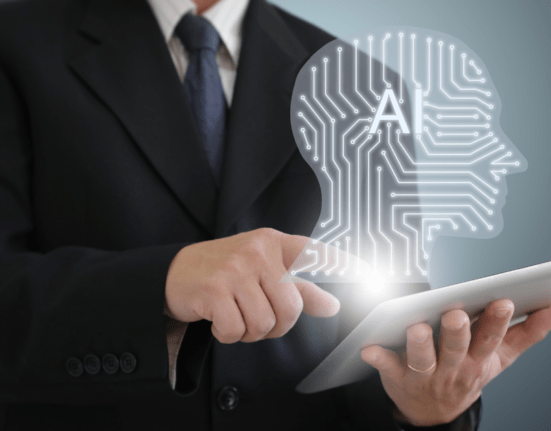Introduction
Workforce skill gaps are a significant challenge for businesses today. Many employees lack the specific skills to adapt to new technologies and job demands. This skills shortage can hinder business growth and productivity. However, AI-powered learning is becoming a powerful solution to address these gaps. By improving training efficiency and personalizing learning experiences, AI helps employees develop the skills they need more effectively.
Understanding Workforce Skill Gaps
Common Causes of Skill Gaps
Skill gaps often occur due to rapid technological advancements. New tools and software change the way tasks are performed, and employees may struggle to keep up. Evolving job roles also contribute to this problem. As businesses adapt, they require employees to acquire new competencies that were not necessary in the past.
Challenges with Traditional Upskilling Methods
Traditional training methods can be slow and inefficient. They typically involve generic courses that don’t account for individual learning needs. This one-size-fits-all approach often fails to engage employees, leaving skill gaps unaddressed. Additionally, businesses may struggle to scale training for large teams.
The Need for Continuous Learning
In today’s fast-paced work environment, continuous learning is essential. The workplace is constantly changing, and employees must stay updated to keep up with new tools, processes, and trends. This makes it necessary for businesses to invest in upskilling programs that can quickly adapt to the ever-evolving needs of the workforce.
The Role of AI in Learning and Development
Customizing Training for Individual Needs
AI-powered learning systems can adapt to each employee’s specific learning style and pace. By analyzing data about an employee’s progress and learning preferences, AI tailors training programs to maximize effectiveness. This personalization ensures employees gain the skills they need more efficiently.
AI-Driven Assessments for Identifying Skill Gaps
AI systems can also assess employees’ current skill levels. By using tests, quizzes, and performance data, AI can pinpoint the areas where employees need improvement. This targeted approach allows businesses to focus on the most critical skill gaps and design training programs accordingly.
Personalized Learning Paths
With AI, companies can offer personalized learning paths for each employee. This approach ensures employees are not overwhelmed by irrelevant content. Instead, they receive exactly what they need to progress in their careers. This method improves both engagement and the effectiveness of training programs.
AI-Powered Tools for Upskilling Employees
Adaptive Learning Platforms and Smart Training Modules
Adaptive learning platforms powered by AI adjust content based on real-time feedback. These platforms can change difficulty levels and provide additional resources when employees need extra support. This adaptability ensures that employees are continuously challenged but not overwhelmed.
AI Chatbots and Virtual Mentors
AI chatbots and virtual mentors are becoming popular tools in employee training. These AI assistants can answer questions and guide in real-time. Whether it’s explaining a concept or offering practical tips, these tools allow employees to receive immediate support without waiting for a human instructor.
AI-Driven Video Tutorials and Simulations
AI video generator tools can generate personalized tutorials and simulations for hands-on learning. Video creates dynamic training content, while an AI clip generator allows companies to easily produce customized video snippets. Additionally, a video compressor helps ensure that training videos are optimized for quick loading, providing a smooth learning experience. These tools enable employees to learn by doing, reinforcing their understanding through practical application.
Benefits of AI-Powered Learning for Workforce Development
Increased Training Efficiency
AI enhances the efficiency of training programs by automating tasks such as content delivery, assessments, and feedback. This reduces the time spent on administrative tasks and allows trainers to focus on more strategic aspects of development. As a result, employees can learn faster, and businesses can upskill their teams more effectively.
Higher Engagement and Retention Rates
Personalized learning experiences provided by AI boost employee engagement. When training is relevant and tailored to their needs, employees are more likely to stay motivated and retain the information. As a result, businesses see higher completion rates and better long-term learning outcomes.
Scalability and Cost-Effectiveness
AI-powered learning solutions are scalable. They can train a large number of employees simultaneously without increasing costs significantly. AI can deliver the same high-quality training to hundreds or even thousands of employees, making it a cost-effective solution for businesses of all sizes.
Implementing AI-Powered Learning in Your Organization
Steps to Integrate AI-Based Training Solutions
To integrate AI-driven learning into your organization, first, assess your business’s training needs and objectives. Next, choose AI tools that align with these goals, such as adaptive learning platforms or AI-driven assessments. Ensure your team receives proper training to use these tools effectively and set clear expectations for measuring success.
Best Practices for Maximizing AI-Driven Learning Effectiveness
Maximizing the effectiveness of AI-powered learning requires ongoing evaluation. Continuously monitor employee progress and gather feedback to adjust training programs as needed. Also, ensure that AI tools are regularly updated to align with evolving technologies and best practices.
Overcoming Challenges in AI Adoption
Some challenges in adopting AI for training include employee resistance to new technologies and the need for an initial investment in AI tools. To overcome these hurdles, businesses should communicate the benefits of AI to employees and provide support throughout the transition. A phased rollout approach can also help employees adjust gradually.
Conclusion
AI is transforming the way businesses address workforce skill gaps. By personalizing learning experiences and improving training efficiency, AI is helping organizations build stronger, more skilled teams. As technology continues to evolve, AI-powered learning will play an increasingly important role in workforce development. Companies should embrace these solutions to stay competitive and ensure their employees are prepared for the future.
Additional resources:










